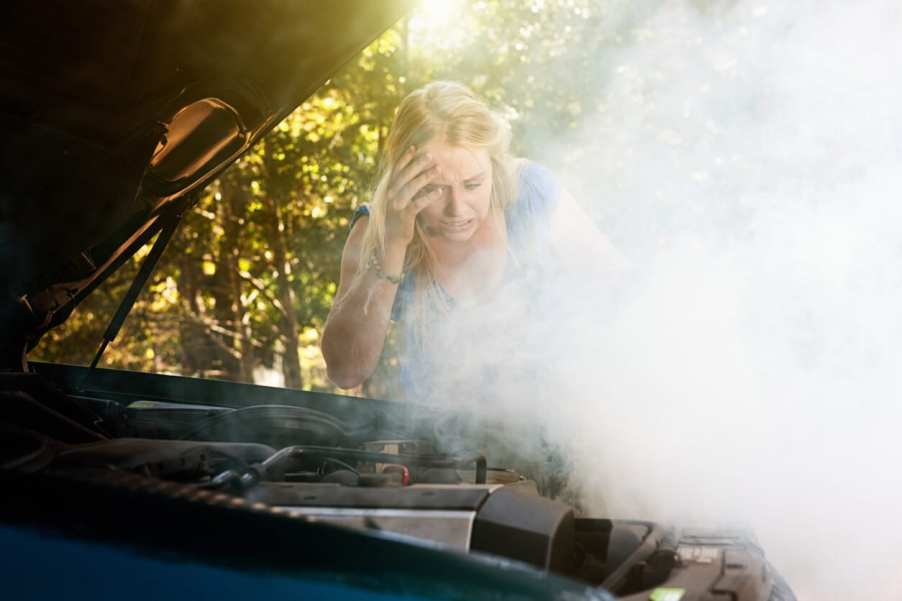
Is It Dangerous to Drive With a Coolant Leak?
If you notice that the vehicle is leaking, then it’s time for some maintenance. It may be dangerous to drive with a coolant leak, but how can you tell which fluid is leaking? Let’s cover what to do with a coolant leak.
Is it dangerous to drive with a coolant leak?
Driving with a coolant leak can be dangerous, but it’s not a sign of immediate danger. But doing so can lead to much bigger problems because leaking coolant can seriously damage your engine. It often leads to your engine overheating.
Ignoring a coolant leak could cause damage to the water pump, radiator, and head gasket, leaving you stranded on the side of the road before facing expensive repair bills.
It may also damage the cooling system and heater core or heater. Leaking coolant may prevent the heater from functioning properly by inhibiting the ability to warm air. As a result, you might have a chilly ride on colder days.

With a radiator leak or coolant leak, you might only have a few minutes before the engine overheats. How much time you have can depend on how you work the engine, your driving speed, if it’s a hot day, and how much coolant is left in the coolant reservoir.
What are the signs of leaking coolant?
With a coolant leak, you may notice:
- A sweet smell after driving your vehicle
- Illuminated symbols on your dashboard
- Your temperature gauges rising
- Your engine keeps overheating
- A puddle of pink, orange, or green fluid under your car
What could cause the coolant to leak?
- Broken or disconnected hoses: Over time your radiator hoses can crack or become disconnected. Replacing them is quick and affordable.
- Radiator corrosion: If your radiator faces corrosion it may deteriorate, allowing coolant to leak through holes or cracks in the weak metal.
- Radiator cap issues: If your radiator cap is put on incorrectly or missing, coolant may boil over or escape. The cap is responsible for maintaining the proper pressure in the cooling system.
- Header tank leak: the area where the header meets the radiator tank is a stress point that may crack, allowing coolant to leak.
What to do if your car is leaking coolant
With a coolant leak, it’s best to make an appointment with a vehicle technician as soon as possible.
Depending on the damage, it may cost between $150 to $2,000 to repair with parts and lobar included. People who correct the issue at home typically shell out $800.
You can use water as a temporary replacement for short distances but don’t push it. You can use a mix of antifreeze and water, but there is a risk of sediment setting at the bottom of the radiator.
Antifreeze is considered to be the same as coolant after the glycol-based liquid is diluted with water. The ratio of antifreeze and water should be 50:50. You can also purchase pre-mixed solutions.
Also, never add water while the engine is running. Wait about 15 to 20 minutes to allow things to cool off. Never splash cold water over the hot engine or radiator because various materials have different reactions to rapidly changing temperatures and may become damaged.





